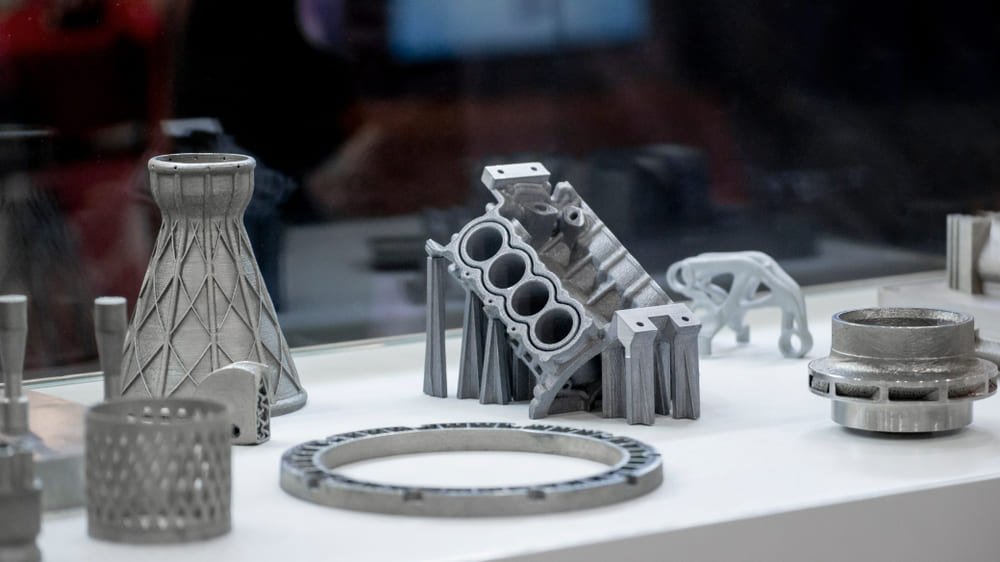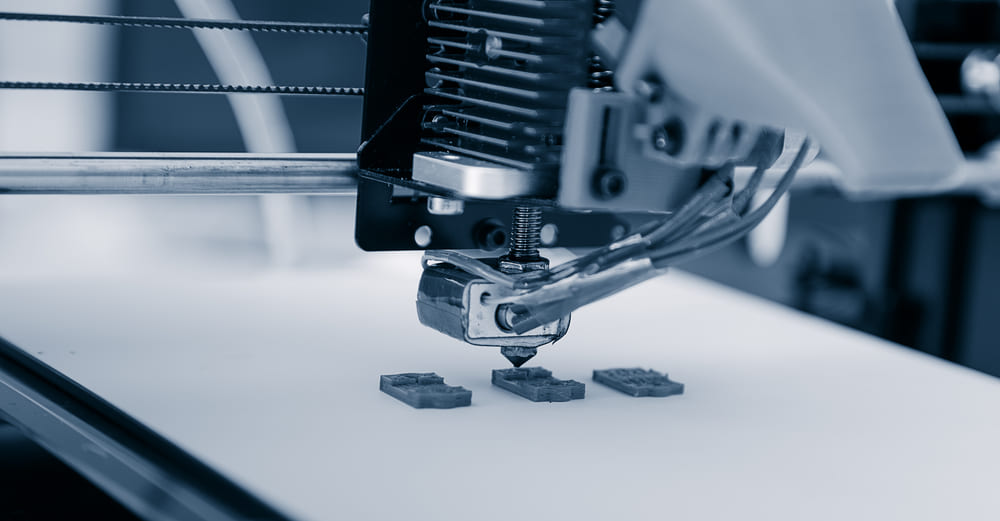Unlike in the classic Damascus steel, instead of two types of materials, only one was used. In this case, it was an alloy of iron, nickel and titanium. But thanks to modern technology, it has been possible to create a structure that replicates the results of ancient blacksmithing technologies.
3D printing is increasingly finding its way into various areas of human activity. As is typically the case, cinematography is at the forefront of progress. Almost no science fiction film or spy thriller can be imagined without a scene in which the main characters print something on a 3D printer. Sometimes these are masks for spies, sometimes they are parts of some secret weapon. In the film Ocean's Eight, the 3D printer played one of the main roles. With its help, a replica of a precious necklace made of zirconium and other metals was printed. The possibility of implementing such an idea in such a short period of time was criticised by 3D modelling experts. But it is an indisputable fact that the creation of three-dimensional objects of complex shape with the help of this technology has become a part of our lives.

Who invented 3D-printing and when?
In 1980, the Japanese scientist Hideo Kodama decided to patent a device which made it possible to create rigid objects from a photopolymer resin. Thin layers of resin were applied one on top of the other and hardened after UV exposure. Since then, the technology has leaped forward, and today 3D printing is performed in a completely different way. The Japanese inventor could not complete the formal procedure of registering the patent within the time allotted. Nevertheless, he is considered to be the founding father of 3D printing. Or, as it is also called, additive technology.
Three years later, similar devices were patented by a group of scientists from France and the American engineer Chuck Hull. Despite the fact that the French did not recognise the commercial potential of the technology, the American, having received a patent, founded the 3D Systems company. It still successfully manufactures and innovates 3D printers. The technology used by Hull and his less successful colleagues is called STL (stereolithography).

In the 1980s, two more three-dimensional printing methods appeared in the United States. Selective Laser Sintering (SLS) uses a powdery raw material that is sintered with the help of a laser. This method became relatively available in the late 2000s. The simplest Fused Deposition Modelling (FDM) technology was patented in 1988. Plastic filament serves as the raw material for this technology
The first 3D printing machines were expensive and bulky, but over time, the equipment has become more convenient and compact. There are even printers that can be used at home. What can be 3D printed? In recent years, the range of materials used with this technology has significantly expanded. Initially it was created for polymers, and today even concrete and chocolate are used. The creation of three-dimensional objects from metals and alloys is becoming more and more popular.
Steel and other metals for 3D printing
The first patents for 3D printers using metals and alloys as raw materials were obtained in the mid-1990s. How does a metal 3D printer work? The technology by which three-dimensional metal products are printed is called Direct Metal Laser Sintering (DMLS). In fact, this is a refinement of SLS technology.

In 3D printing today, several dozen types of metal raw materials are used in the format of spherical granules ranging in size from 4 to 80 microns. The most popular metal powders for 3D printing can be based on non-ferrous metals (including aluminium, titanium, copper and cobalt-chromium) as well as iron-based alloys. Steel powders can be divided into:
- stainless (grades 17-4PH, AISI 410, AISI 304L, AISI 316L, AISI 904L)
- instrumental (grades 1.2343, 1.2367, 1.2709)
- nickel (Inconel 625, Inconel 718) - a patented alloy, which is actually not steel and contains iron, but the main elements are nickel and chromium
Products of complex shapes are created with the help of such technologies. And their density exceeds casting indicators. Metal products printed on 3D printers are used in the food, aerospace, oil and gas industries. They are also used in medicine, prosthetics, mechanical engineering, electronics, jewellery, etc.
In addition to the SLS/DMLS technology, electron beam melting (EBM) is also used to print three-dimensional metal objects. Initially, metal wire was used for these printers. But it turned out that it is better to use a special material - metal clay – for the manufacture of high-precision parts. It is like a thread made of a mixture of metal chips, organic glue and water. The device prints a product of the desired shape, which is then annealed. When heated, the glue and water are cooked away, and the chips are fused into a single material, which is very similar in weight and other parameters to an all-metal product. It can even rust slightly. Another difference between EBM printers and SLS/DMLS technology is that directed electronic pulses, rather than a laser beam, are generated to melt metal clay. This method achieves higher print quality and finer details.

At the same time, there is room for improvement in 3D metal production. For example, the economic effect is significantly noticeable on single items of complex shape, which are difficult to produce by casting. And when the technology is scaled up, this effect is significantly reduced. In addition, the ready-made object usually requires finishing, which can take a long period of time.
But progress cannot be stopped. According to the Wohlers Report, the global 3D printing market grew by 7.1% in 2020 and reached approximately US$5.3 billion, even amid the coronavirus pandemic.
The ‘metal’ 3D printing segment is also growing. Its further development can be facilitated by the reduction in cost and simplification of the metal printing process. What can a 3D printer be used for? There are already printer models that can be placed on an office desk for printing mock-ups of volumetric projects, machine parts or jewellery. Large industrial companies are also focused on scale. For example, GE presented a prototype of the largest laser 3D printer, ATLAS (Additive Technology Large Area System), in 2017. And the American technological start-up Relativity Space intends to use 3D printing to create a reusable launch vehicle, equipped with jet engines, also created on a 3D printer. This solution will significantly reduce the number of parts and production time. The company believes it will take only two months to print the rocket.
It is expected that the printing of parts for jet engines and other aviation components will significantly reduce the production cost of aerospace equipment. But for the mass introduction of such technologies, billions of dollars of investment and years of adapting technical supply chains will be required.
